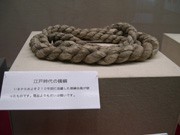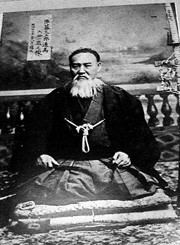| Brothers in Sumo – part two Brian Lewin |

 |
| Yokozuna Comparisons Joe Kuroda |

 |
| Rikishi of Old John Gunning |

 |
| Heya Peek Barbara Ann Klein |

 |
| SFM Interview John Gunning |

 |
| Sumo 101 Barbara Ann Klein |

 |
| Photo Bonanza See the Hatsu Basho |
 |
| Hatsu Basho Review Lon Howard |

 |
| Lower Division Rikishi Mikko Mattila |

 |
| Haru Basho Forecast Pierre Wohlleben & Mark Buckton |

 |
| Kimarite Focus Mikko Mattila |
 |
| Minusha John McTague |
 |
| Online Gaming Alexander Nitschke |

 |
| Kokugi Connections Todd Lambert |

 |
| Fan Debate Feb's debate sees |
 |
SFM Cartoons
Benny Loh & Stephen Thompson
In the third of our cartoon bonanzas, sit back and enjoy BL’s offerings and put a caption to ST’s pic to win yourselves a banzuke
| Let’s Hear From You What was it that |

 |
| Readers’ Letters See what some SFM |

 |
Sumo Quiz
The Quizmaster
Answer the Qs and win yourself next basho’s banzuke.
From October 1777 to February 1786, Tanikaze lost only one bout (in the 1782 February basho), to Onogawa. His consecutive winning record of 63 was not broken until 150 years later by Futabayama, with his 69 consecutive victories. Tanikaze won 23 yusho or
yusho-equivalents, and this figure is the second highest in the sport’s two-basho a year period, after ozeki Raiden Tame-emon (1767-1825). When Tanikaze passed away as a result of contracting flu during a basho in 1795, he was on a 35-bout winning streak. He was 44-years-old when he died and had been active for 26 years.
The 15th yokozuna Umegatani I (1845-1928) is credited with bringing ozumo to the masses in

A tsuna belonging to Edo era yokozuna Tanikaze (photo by Mark Buckton)
Single-handed efforts by the 12th yokozuna Jinmaku Kyugoro (1829-1903) resulted in the current yokozuna list being etched on the yokozuna stone located in the Tomioka Hachimangu Shrine in Tokyo. Jinmaku traveled all over Japan to collect donations for the project, and after nine years on the road, it was finally completed on November 21, 1900. The 3.2 meter-high stone is made of granite and weighs 20 tons. An interesting observation is that Jinmaku added ozeki Raiden’s name to the stone even though he was not specifically acknowledged as a yokozuna, but by Jinmaku’s time, Raiden’s overwhelming strength was already legendary.
Raiden was a contemporary of Tanikaze and Onogawa but was not granted a yokozuna license by the House of Yoshida Tsukasa. Jinmaku listed

Jinmaku (photo by Barbara Ann Klein, courtesy Edo-Tokyo Museum)
Raiden as an “unrivaled” rikishi.
There is a legion of sumo fans who still view Raiden as the greatest rikishi of all time. Indeed, Raiden was already considered to be a superstar when he made his dohyo debut at the 1790 November basho as sekiwake. He proceeded to win 8 bouts and lost none (with two bouts on hold as there was no rematch at the time). This is equivalent to a current makuuchi yusho. Raiden never lost more than two bouts in a single basho. The only rikishi he ever lost to twice was Kachozan, also know as Ichinoji Asaemon. In his 35 makuuchi basho, Raiden won 254, lost 10, drew 2, had 14 holds, 5 no results and
Next
